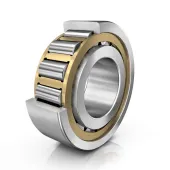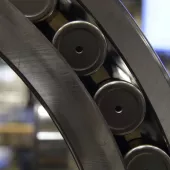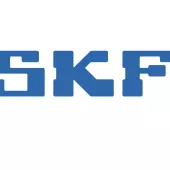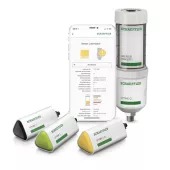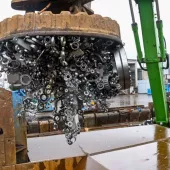Rolling Bearing Selection
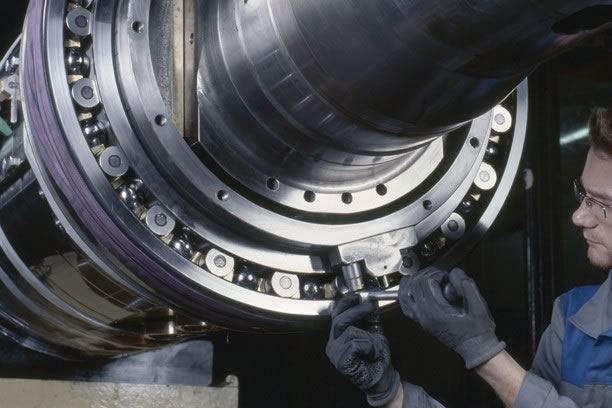
First published in the May 2017 issue of Quarry Management
When selecting rolling bearings for industrial plant, machines and equipment, it is important to look at the bigger picture and analyse the total cost of ownership, not just the purchase price of the bearings, says Dr Steve Lacey, technology centre manager at Schaeffler UK
Rolling bearings are critical components in many industries and in various types of rotating plant, machines and equipment. However, the decision in favour of a specific rolling bearing should always be taken after analysing the whole-life costs or total cost of ownership (TCO) of the bearing, and not merely on the basis of purchase price alone.
Buying cheaper bearings can often prove more expensive over the long term. Often, the purchase price accounts for just 10% of the overall costs. So, when it comes to buying rolling bearings, what is the point in saving a couple of pounds here and there if this means higher energy costs due to higher-friction bearings, or higher maintenance overheads resulting from reduced service life of a machine, or a bearing failure that results in unplanned machine downtime, leading to lost production, delayed deliveries and dissatisfied customers?
Today’s advanced, high-technology rolling bearings offer many improved features that allow TCO reductions to be achieved, providing added value over the complete life of rotating plant, machines and equipment.
For a bearing designed/selected for a given industrial application, the TCO is equivalent to the sum of the following:
Initial cost/purchase price + installation/commissioning costs + energy costs + operation costs + maintenance costs (routine and planned) + downtime costs + environmental costs + decommissioning/disposal costs
Whilst the initial purchase price of an advanced bearing solution will be higher than a standard bearing, the potential savings that can be achieved in the form of reduced assembly times, improved energy efficiency (eg by using lower-friction bearing components) and reduced maintenance costs, often more than outweigh the initial higher purchase price of the advanced bearing solution.
Adding value over life
The influence of an improved design in reducing TCO and adding value over life can be significant, as designed-in savings are often sustainable and permanent. Sustained reductions over the life of the system or equipment are worth far more to the customer in terms of savings than a reduction in the initial purchase price of the bearings.
For industrial OEMs, the design of bearings can add value to their own products in many ways. By engaging with these OEMs early in the design and development stages, bearing suppliers can customize fully optimized, integrated bearings and assemblies that meet the specific requirements of an application. Bearing suppliers can add value by, for example, creating and customizing internal bearing designs that maximize load-carrying capacity and stiffness or minimize friction.
In applications where design envelopes are small, the bearing design can be optimized for ease of assembly and to reduce assembly times. For example, screw threads on assembly mating surfaces can be incorporated into the bearing design. It may also be possible to incorporate components from the surrounding shaft and housing into the bearing design. Features such as these add real value to the OEM customer’s system and can potentially lead to cost savings over the whole life of the machine.
Other features can be added to the bearings that add further value over the life of the machine. These include special sealing technology within the bearing to help save space; anti-rotation features to prevent slippage under the effects of rapid changes in speed and direction of rotation; coating the surfaces of bearing components to minimize friction; and optimizing bearing operation under boundary lubrication conditions.
The bearing supplier can examine closely the overall costs of machines, plants and their components – from purchase, energy consumption and maintenance, all the way through to repairs, dismantling and disposal. Well-known cost drivers and hidden expenses can, therefore, be identified, optimized and eliminated.
As a bearing suppliers, Schaeffler view TCO as starting with intensive research and development efforts that are aimed at continuous improvements in quality standards and, therefore, the running properties of rolling bearings, through optimized design and materials. The company also offers its customers a well-aimed, comprehensive technical advisory service and training, in order to find the best suitable solution for each application. Schaeffler’s sales and field service engineers are familiar with their customers’ respective industrial sectors and are supported by advanced software for bearing selection, calculation and simulation. Moreover, factors such as efficient instructions and suitable tools for bearing mounting, all the way through to condition-based maintenance, lubrication, dismounting and reconditioning, are all taken into consideration.
The Schaeffler Global Technology Network comprises local Schaeffler Technology Centres (STCs). These bring the company’s engineering and service knowledge even closer to the customer and allow technical issues to be addressed quickly and in the most effective way. Expert advice and support is available for all aspects of rolling bearing technology, including application engineering, calculations, manufacturing processes, lubrication, mounting services, condition monitoring, and installation consulting, to deliver customized rolling bearing solutions to uniformly high-quality standards throughout the world. STCs constantly share information and ideas across the Global Technology Network. If more in-depth specialist knowledge is required, these networks ensure highly qualified support is provided quickly – irrespective of where it is needed in the world.
Construction machinery applications
Many rolling bearings from Schaeffler are available in a high-performance, premium quality X-life version. When developing the X-life series of tapered roller bearings, particular attention was paid to achieving high reliability and minimal friction, particularly in high-load applications and/or those that require rotational accuracy. This means that manufacturers of hydraulic units or gearboxes (pinion bearing supports), such as those found in construction machinery, can now surpass previous performance limits, whilst significantly improving operational safety. In terms of downsizing, the improved characteristics of the X-life bearings mean that the performance of the gearbox is improved, whilst the design envelope remains the same.
A 20% improvement in dynamic load rating and minimum 70% improvement in basic rating life were achieved by improving the geometry, surface quality, materials, and dimensional and running accuracies of the bearings.
The premium bearing material used in the manufacture of the X-life tapered roller bearings is specially adapted to meet the requirements of the rolling bearings and is an important factor in the increased performance of the bearings. The fine grain structure of this material provides high toughness and, therefore, high resistance to solid contaminants. In addition, a logarithmic profile was developed for the bearing raceways and the outside surface of the rollers, which compensates for high stress peaks under high loads and any ‘skewing’ that may occur during operation. These optimized surfaces assist in the formation of an elasto-hydrodynamic lubricant film, even at very low operating speeds, which allows the bearings to withstand high loads during start-up. Furthermore, significantly improved dimensional and geometrical tolerances ensure optimum load distribution. Stress peaks are thus avoided, which reduces material loading.
The frictional torque of the new X-life tapered roller bearings has been reduced by up to 50% compared with conventional products. This is due to high dimensional and running accuracy in conjunction with improved surface topography. The revised contact geometry of the inner-ring rib and roller end face also assists with the reduction of friction. As a result, bearing operating temperature has also been reduced by up to 20%.
X-life tapered roller bearings are not only more economical, but also result in lower bearing operating temperatures, which, in turn, places significantly less strain on the lubricant. This allows maintenance intervals to be extended and results in the bearing operating at reduced noise levels. Once again, although the purchase price of X-life bearings is higher than standard bearings, the TCO is significantly reduced over the life of the construction machine.
- Subscribe to Quarry Management, the monthly journal for the mineral products industry, to read articles before they appear on Agg-Net.com

